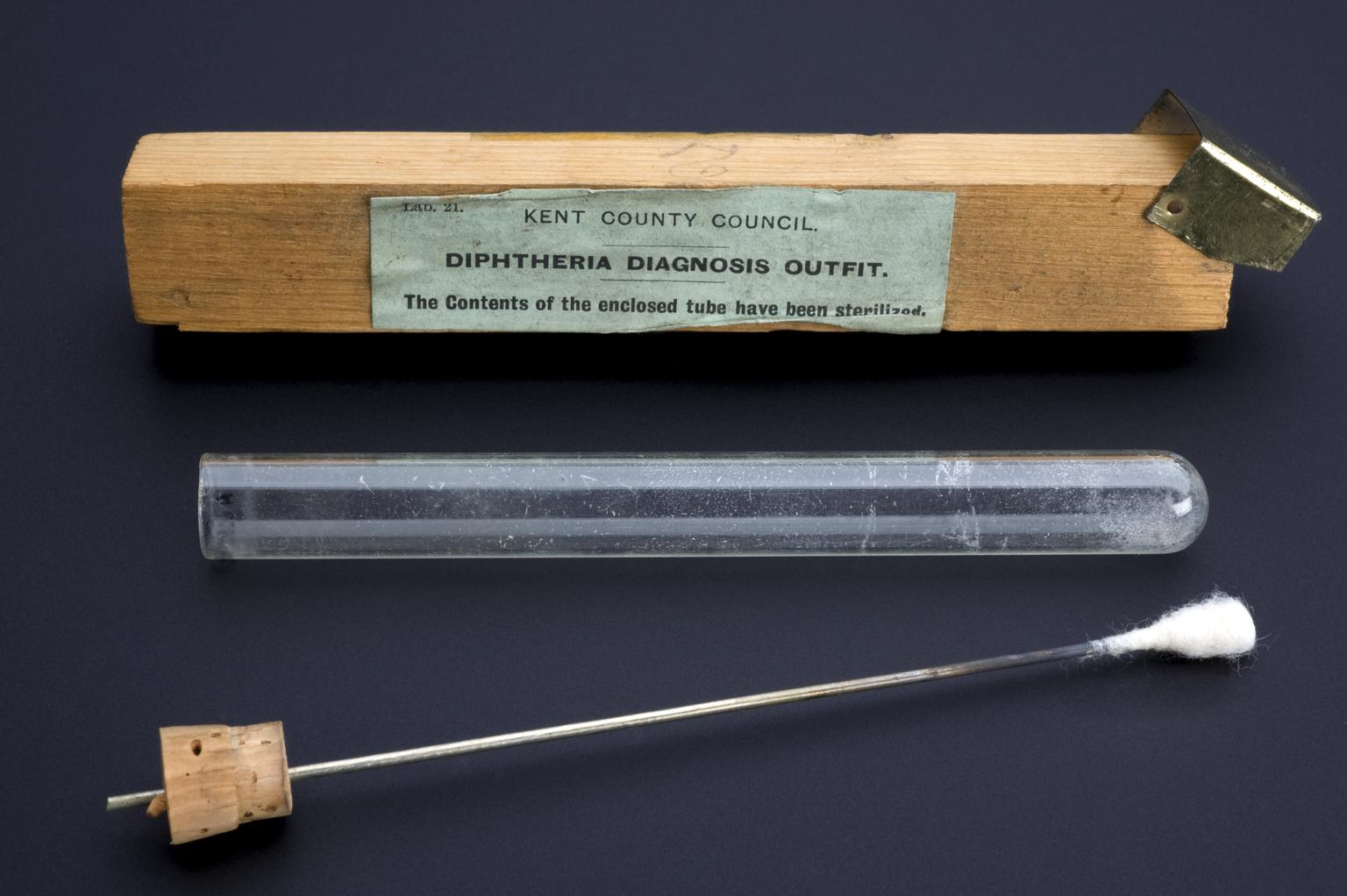


Throat swab, cotton wool on metal rod, in glass tube, in wooden case, supplied by Kent County Council, early 20th century, for diphtheria diagnosis
Diphtheria is a potentially deadly contagious infection which especially affects children. In 1883, German bacteriologist Edwin Klebs (1834–1913) discovered the bacterium which causes diphtheria. This was then isolated the following year by fellow researcher Friedrich Loeffler (1852–1915), which meant that the presence of bacteria could be tested for and used to diagnose infection.
This throat swab was supplied by Kent County Council who would have supplied them to clinics and doctors’ surgeries to help monitor and check the spread of the disease. Diphtheria has been a notifiable disease since 1889, which means all cases must be reported for government statistics. Fortunately, diphtheria is now rare in the United Kingdom because of routine childhood vaccination.
Details
- Category:
- Clinical Diagnosis
- Collection:
- Sir Henry Wellcome's Museum Collection
- Object Number:
- A606027
- Measurements:
-
Case: 24 mm x 148 mm x 24 mm, .0391 kg
swab: 142 mm 12 mm,
- type:
- throat swab
- credit:
- Loan, Wellcome Trust





